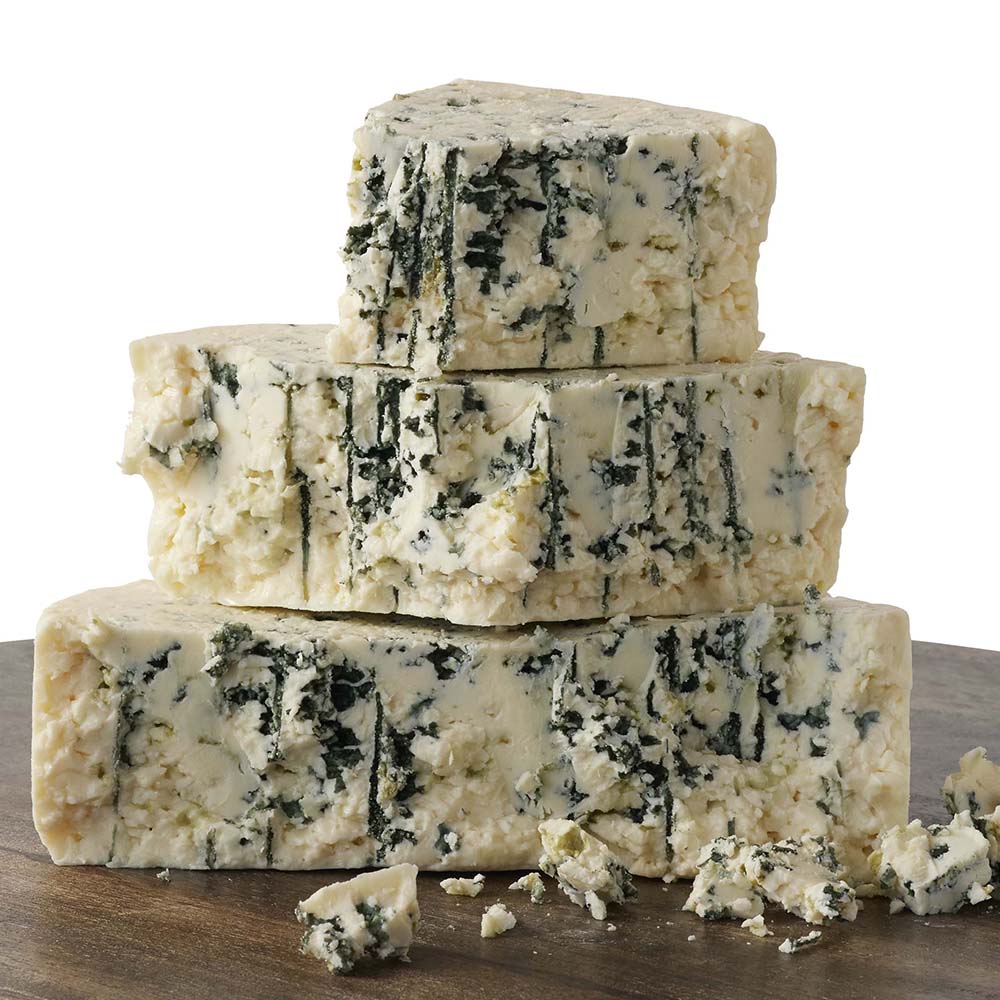And for all you blue mold fans, here is the story of how our blue cheeses earn their stripes.
Penicillium Roqueforti is the blue mold bacteria we use in both Bay Blue and Original Blue. It is added toward the beginning of the cheese making process to the vat with the milk. This allows the mold spores to be equally distributed through the curds and thus the wheels of cheese.
Once the wheels are formed, we activate the bacteria so that the blue veins will grow. We do this on day three (after the wheels are salted) by punching them with stainless steel needles on both sides. This step introduces oxygen into the interior of each wheel. Next is the Curing stage during which the wheels are placed in a warm (about 50 degrees), high humidity environment for 3-4 weeks. During this time, the bacteria deep inside each wheel grows from the inside out through the air passageways created by the needle holes. Once we determine enough blue veining has occurred we slow process down, by moving them to a cooler environment for long-term aging, so that the blue bacteria and enzymes can do their work at a slower pace (and the blue veining doesn’t take over the entire wheel).
Cheeses go into long-term aging to create the right balance of flavor and texture (from the breakdown of fat and protein). When ready, the cheeses are wrapped for distribution and shipped. These final stages all occur in the same cold temps in order to --as much as possible-- keep the blue mold and enzymes in a dormant state. Thus, during the “go-to-market” (packaging, shipping and distribution) phases, the blue mold bacteria is still stunted.
So… when a customer brings a wrapped wedge home and unwraps it, there is a chance the piece of cheese has never been brought to a warmer/ambient temperature since it came out of the curing stage. This means that the blue mold bacteria has gone dormant for a couple of months. When the cheese is first unwrapped, the blue veins can look pale/grey/yellowish/brownish or any combination thereof. Because Penicillium Roqueforti feeds on oxygen, as the unwrapped piece comes in contact with fresh air (OXYGEN) at room temperature, you can see it bloom or BLUEM, right before your eyes.

